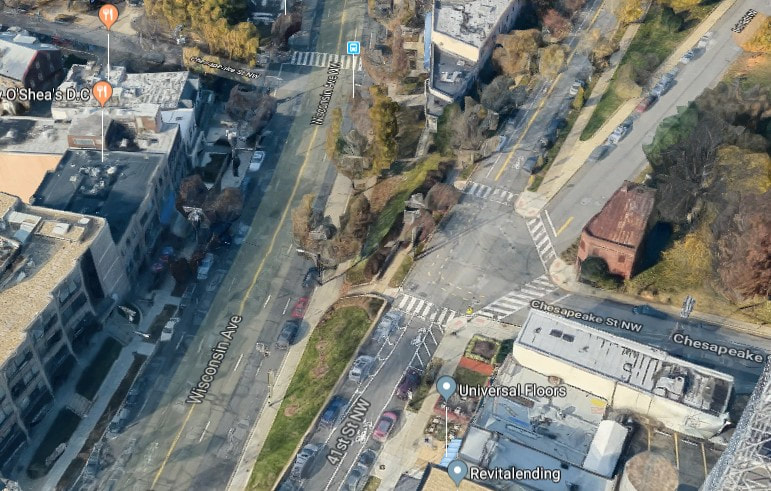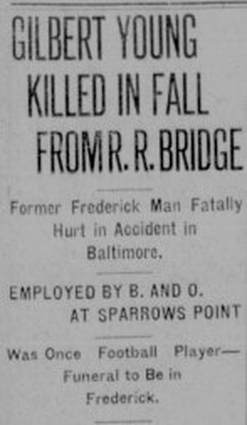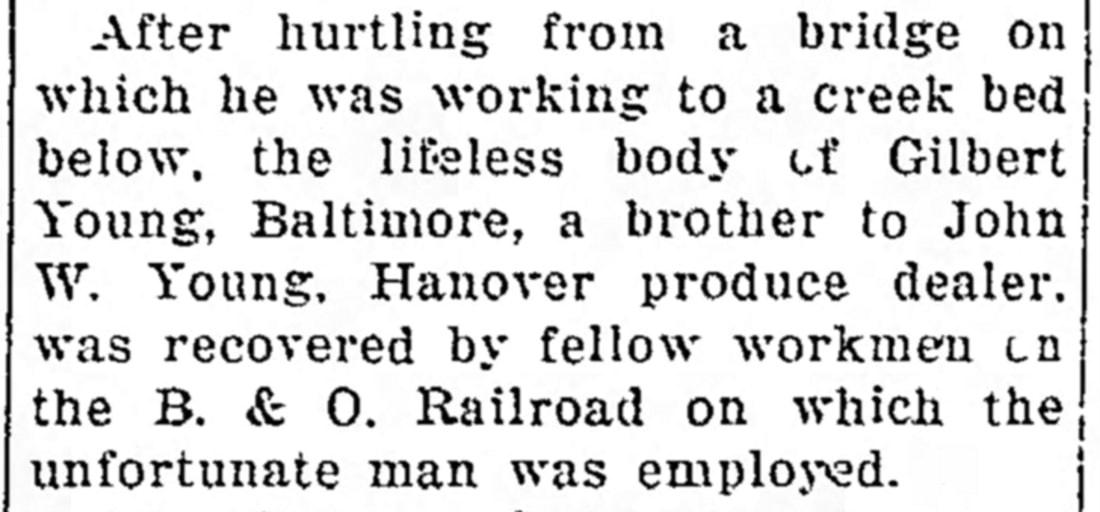|
The weather folks correctly forecasted the recent bout of fierce weather for our area, the result of a March Nor’easter storm that morphed into a rare “bomb cyclone” in some parts of the Mid-Atlantic region. The whole of the eastern seaboard, from Maine to Georgia, was affected as many residents experienced heavy snow, intense rain and subsequent flooding depending on location. Here in the greater DC area, we had some rain during the overnight of March 2nd, 2018, but were spared the intense precipitations elsewhere, especially the snowfall. The area did, however, experience something equally dangerous and destructive from Mother Nature in the form of high winds with gusts blowing from 40-70 miles per hour. As a result, several school districts, including ours, closed for the day. In Washington DC, federal offices shut down as did museums and attractions such as the Smithsonian Institute. In the words of Yukon Cornelius (the loveable, Arctic-based mineral prospector of the 1964 Rankin/Bass “Rudolph the Red-nosed Reindeer” Christmas classic): “Isn’t a fit night out for man nor beast.” Back a few hundred years ago, the single worst part of windstorms was the threat of being struck by a tree, tree-limb, or any other projectile. It’s not hard to imagine the damage that could be inflicted on body, horse or home. As house-building methods, and weather forecasting improved, so did survival rates so to speak. However, a new problem arose with monumental innovations to come in the late 19th century, none better than electricity. Electrification was introduced to the United States in the 1880's, and was originally found in the large cities. Electricity needed to be carried from place to place by lines—and these were strung between homes and poles. Keep in mind the materials of the day, not to mention the common knowledge and expertise regarding the newfound energy source. Enter a windstorm, and you likely had electrical outages. Worst yet, wind toppled trees and limbs, which in turn downed power poles and lines, sometimes bringing damage in the form of fire—a harsh reality. Today, we frequently experience the inconvenience of outages, made the more impactful thanks to our increased dependence on lighting, appliances, computers, smartphones and other electronic gadgets. This recent storm was responsible for leaving many residents "in the dark," both figuratively and literally. However, the threat of fire is seldom worried about these days. Its rarity stems from various advances in electrical safety and technology over the years. A Shocking Discovery One of our “eternal residents” of Mount Olivet was a victim of high wind’s unfortunate effect on electricity in an earlier time. His name was Samuel D. Young, and the year was 1909. The 18 year-old, former Fredericktonian was living at the time in the Tenleytown vicinity of northwest Washington DC. Young was residing at a boarding house located at 4708 Wisconsin Ave. Interestingly, this was just a few blocks west of Fort Reno, one of a series of star-forts built to protect the Union capital city during the American Civil War. Samuel was here for work, apparently engaged in a long-term construction-related work assignment. He had grown up with a vast number of siblings in the 400 block of W. Patrick Street, an area once commonly referred to as "Battletown." The enclave of about 18 homes derived its name from a small encounter between Colonel Stephen Steiner & Stephen Klein, the first residents of the addition. And speaking of battles, this was a place traversed by the earlier mentioned namesake of Fort Reno, Major Gen. Jesse L. Reno. He passed through Battletown on the National Pike (W. Patrick St.) on September 12th, 1862 as he led his Union troops west toward Middletown. Just moments earlier he had encountered Barbara Fritchie waving her flag in support. This rising star in the Union Army would be killed by a sharpshooter's bullet just 48 hours later (September 14, 1862) at the Battle of South Mountain. Samuel Young's father, John William Young ran a meat market operation out of his home while also selling other groceries and provisions to neighbors on Frederick's west side. His son, also named John, did the butchering. Samuel's mother, Anna "Annie" Elizabeth (Otto) Young, was a German immigrant who had come to America when she was 11 years old.  William Howard Taft (1857-1930) William Howard Taft (1857-1930) Let's get back to talking about the weather, shall we? Residents in Frederick and Washington, DC awoke to miserable meteorological conditions on the morning of March 4th, 1909. It was a momentous occasion in Samuel's new home of the nation’s capital, as it would play host to the presidential inauguration of William Howard Taft. Just one day before, the head of what would eventually become the National Weather Service personally assured the President-elect that the overnight weather would only include rain and wet snow, giving way to ideal conditions for his big day. Taft later joked that he “knew it would be a cold day in hell when he became president.” Our 27th president was not far off, as the region had been hit by an overnight blizzard that produced ten inches of snow amidst destructive winds.  A variety of scenes around Washington DC on March 4, 1909. These range from snow-packed neighborhoods and downed telegraph/power lines to workers removing snow in front of reviewing stand for the Inaugural parade. Note images taken from the inaugural including a close-up of President and Mrs. Taft in an open carriage. The show must go on! "By the dawn's early light," crews of workmen began removing snow and slush along major thoroughfares and the US Capitol building. The Inaugural Parade, consisting of 20,000 marchers, would go on as scheduled, however the hallmark swearing-in ceremony had been moved indoors to the Senate chamber. Meanwhile, just a few miles away in the northwest part of the District, Samuel D. Young’s body lay dead in a tree-laden lot as Mr. Taft was taking his oath of office. The location of the deceased was less than a block from his apartment (4708 Wisconsin Avenue). Just after noon, a fellow boarder, named Henry Gearhart, set out looking for Samuel after the young man failed to return home the prior night after venturing out in the rain to take-in a show at a local theater. Around 2:00pm, Gearhart came across his chum lying in a blanket of snow. It wasn’t an ordinary, harmless “blanket of snow,” rather one riddled with downed electrical wires, apparently toppled by the storm. A physician was summoned, but it was too late as Young had died from electrocution. The body was removed to the Seventh Police Precinct, and later to the morgue by order of Coroner J. Ramsey Nevitt. An investigation showed that Samuel was carrying an umbrella at the time of his death. It was this umbrella that likely came into contact with downed power lines as the victim neared the intersection of Chesapeake Street and Brookeville Road (today's 41st St), just uphill from Wisconsin Avenue some 20 yards in the distance. Unable to see clearly in the dark, windy, and snowy conditions, Samuel D. Young unknowingly walked right into his demise.  I presume that Samuel D. Young died in this immediate vicinity showing a current day utility pole (to the right) located on the SW corner of the intersection between Chesapeake St (left) and Brookeville Ave (41st St). Wisconsin Ave is down a slight hill to the right, separated by a small, tree-covered parcel roughly 15 yards wide. There is a sidewalk with stairs that leads to Wisconsin Ave just beyond the pole as we are looking south in this photo. Perhaps this was a well used path at one point? Note the old/small pole located immediately next to the prominent pole in question. Is this a remnant of the original power line pole that witnessed the death of Samuel D. Young back in 1909?
Nine months later, Samuel’s brother and estate administrator, John W. Young, Jr. (later a produce dealer living in Hanover, PA), filed a lawsuit in DC District Supreme Court for his sibling’s wrongful death. The plaintiff was the estate of Samuel D. Young, and the defendant was the District of Columbia.
 Washington Evening Star (March 4, 1910) Washington Evening Star (March 4, 1910) I couldn’t locate much more on how this suit played out, but it must have been dismissed, with a new defendant coming to the forefront—the Potomac Edison Power Company. Exactly one year after Samuel Young’s death, attorneys Maddox, Gatley and J.P. McMahon filed their suit for $10,000 against the electricity giant, and supplier of such to the nation’s capital and beyond. Again, I found no follow-up and assume that the matter was simply settled out of court. Solace in some form must have come to family members. Father and son were honored with an impressive 7–foot monument crafted in marble and topped with an ornamental urn. John W. Young, Sr.'s name adorned a panel on the west side, as Samuel’s was placed on the east. In mid-November of 1911, President Taft would come to Frederick to make a presentation on international trade. This took place on November 15th, 1911. Following the engagement, the presidential motorcade stopped briefly here at Mount Olivet on their way out of town and back to the District. President Taft placed a wreath on Francis Scott Key’s grave, a mere hundred yards down the lane from Samuel Young’s final resting place. Fifteen years into the future, another name would be carved on the memorial’s north face, but it would not be Mrs. Annie Young, Samuel's aged mother. Instead, it was that of Samuel’s older brother, Gilbert B. Young. He died at the age of 34 as a result of a unique accident, two days after Christmas of 1926. Gilbert Young was a veteran of World War I and a painter, currently employed by the Baltimore & Ohio Railroad. On December 27th, 1926, he could be found painting atop a railroad bridge in the vicinity of Sparrows Point in southeast Baltimore, longtime home to Bethlehem Steel. Gilbert apparently slipped, or lost balance, and plunged into the water below. Mount Olivet Cemetery records state that he died due to an “accidental drowning due to a fall from a railroad bridge.” Like that of Samuel, Gilbert’s body would be brought to Frederick for final burial. This occurred on December 29th, 1926. The boys’ mother would pass less than three months later. She too would be buried under the shadow of the fine monument located on Area L/lot 41.
2 Comments
Jocelyn Wetzel
3/3/2018 08:31:55 pm
Very interesting reading, Chris. I look forward to these posts each time a new one comes up. Lots of work on your part. Thanks for doing this.
Reply
Pam Holzman
3/4/2018 07:33:11 pm
I just love your stories! Always so interesting.
Reply
Leave a Reply. |
STORIES
|
Archives
July 2024
June 2024
May 2024
April 2024
March 2024
February 2024
January 2024
December 2023
November 2023
September 2023
August 2023
July 2023
June 2023
May 2023
April 2023
March 2023
February 2023
January 2023
December 2022
November 2022
October 2022
September 2022
August 2022
July 2022
June 2022
May 2022
April 2022
March 2022
February 2022
January 2022
December 2021
November 2021
October 2021
September 2021
August 2021
July 2021
June 2021
May 2021
April 2021
March 2021
February 2021
January 2021
December 2020
November 2020
October 2020
September 2020
August 2020
July 2020
June 2020
May 2020
April 2020
March 2020
February 2020
January 2020
December 2019
November 2019
October 2019
September 2019
August 2019
July 2019
June 2019
May 2019
April 2019
March 2019
February 2019
January 2019
December 2018
November 2018
October 2018
September 2018
August 2018
July 2018
June 2018
May 2018
April 2018
March 2018
February 2018
January 2018
December 2017
November 2017
October 2017
September 2017
August 2017
July 2017
June 2017
May 2017
April 2017
March 2017
February 2017
January 2017
December 2016
November 2016

























 RSS Feed
RSS Feed